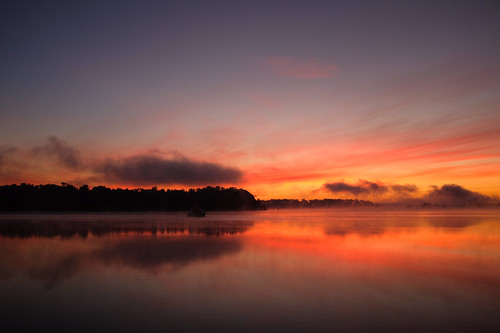The light that appears just after sunrise is special. In this case, I liked how it made the sand colored mountains glow. I wanted something in the foreground and picked this lone josohua tree which I originally thought about shooting in silhouette, however, as the sun began to rise above the mountains behind me I knew I would have a few minutes where the sun lit the top of the tree, but before it lit me and cast my shadow into the scene. Sometimes missing the actual sunrise is fine. Fujifilm X-Pro2 with a Fujinon XF 35mm f2 R WR, 1/60 @ f14, ISO 200.
It was still dark outside when I left Oceanside, Calif., on my way to Joshua Tree National Park, hoping to arrive in time to photograph the sunrise. As I made my way west on the I-10, still some 40 miles from my destination, a place I've never been, and the sky began to slowly lighten, it became evident that I was probably going to miss another sunrise.
It was only then when I recognized a familiar anxiety, which shouldn't exist, yet an anxiety that creeps in almost every time I decide to make one of these personal photo trips. Why do I put any kind of pressure on myself and why does it matter if I miss the sunrise? Am I really missing the sunrise if I'm watching it with my eyes? Do I have to actually capture the sunrise in a photograph in order to alleviate the anxiety? These are the questions I struggle with.
During the middle of the day I had a great time exploring a section of the national park called Jumbo Rocks. Lots of fun climbing around the granite rock formations in search of interesting shapes. I thought the light wrapping around this particular boulder which was balancing on an even bigger boulder made a nice composition. Choosing to convert to monochrome during post processing helps to focus on that composition as does using a red filter, which turns the blue sky almost black. Fujifilm X-Pro2 with a Fujinon XF 35mm f2 R WR, 1/900 @ f8.0, ISO 200.
The strange thing is that I rarely feel this kind of anxiety when I'm on a paid assignment, like the one I just finished the day before. I feel pressure for sure, but somehow it's not the same. I've reflected on this before, this feeling that I have to get a remarkable image or somehow the trip was a waste.
Of course, the reality is that I normally come back from all of these trips with at least some photographs that I'm proud of. What I am certain of though is that I do return from these trips with memories of a great experience. Maybe that is more of the point.
I kept noticing how these lines of a different type of rock made their way through the giant granite formations. In this case, I used the line to lead the viewer into the photo. Fujifilm X-Pro2 with a Fujinon XF 35mm f2 R WR, 1/680 @ f11, ISO 200.
I'm fortunate that I get paid to take photographs. And I'm also fortunate that I get to travel in pursuit of those photographs. And when I can extend that trip in order to experience a new location with my camera, I try to take full advantage of it.
One of the best things about photographing during the winter months is that the sun sets early enough that there is still plenty of time for dinner. What is difficult, however, is with close to 800,000 acres of land, how do you find the perfect spot to photograph that sunset in Joshua Tree National Park. During my travels through the park earlier in the day, I found a section with a lot of trees, so I returned to that spot and after about 20 minutes of walking around as the sun dropped behind a distant mountain, I found a nice composition and made my final photo of the trip. Fujifilm X-Pro2 with a Fujinon XF 16mm f1.4 R WR, 1/60 @ f9.0, ISO 200.
Sometimes on these personal trips, I just need to remind myself to slow down, realize that there is not a deadline and that there is not an editor waiting for the results. These trips are about me and my camera and capturing memories. And sometimes when I miss that photo of a sunrise, I need to remind myself that I still had the experience and know that I'm fine with that.



















